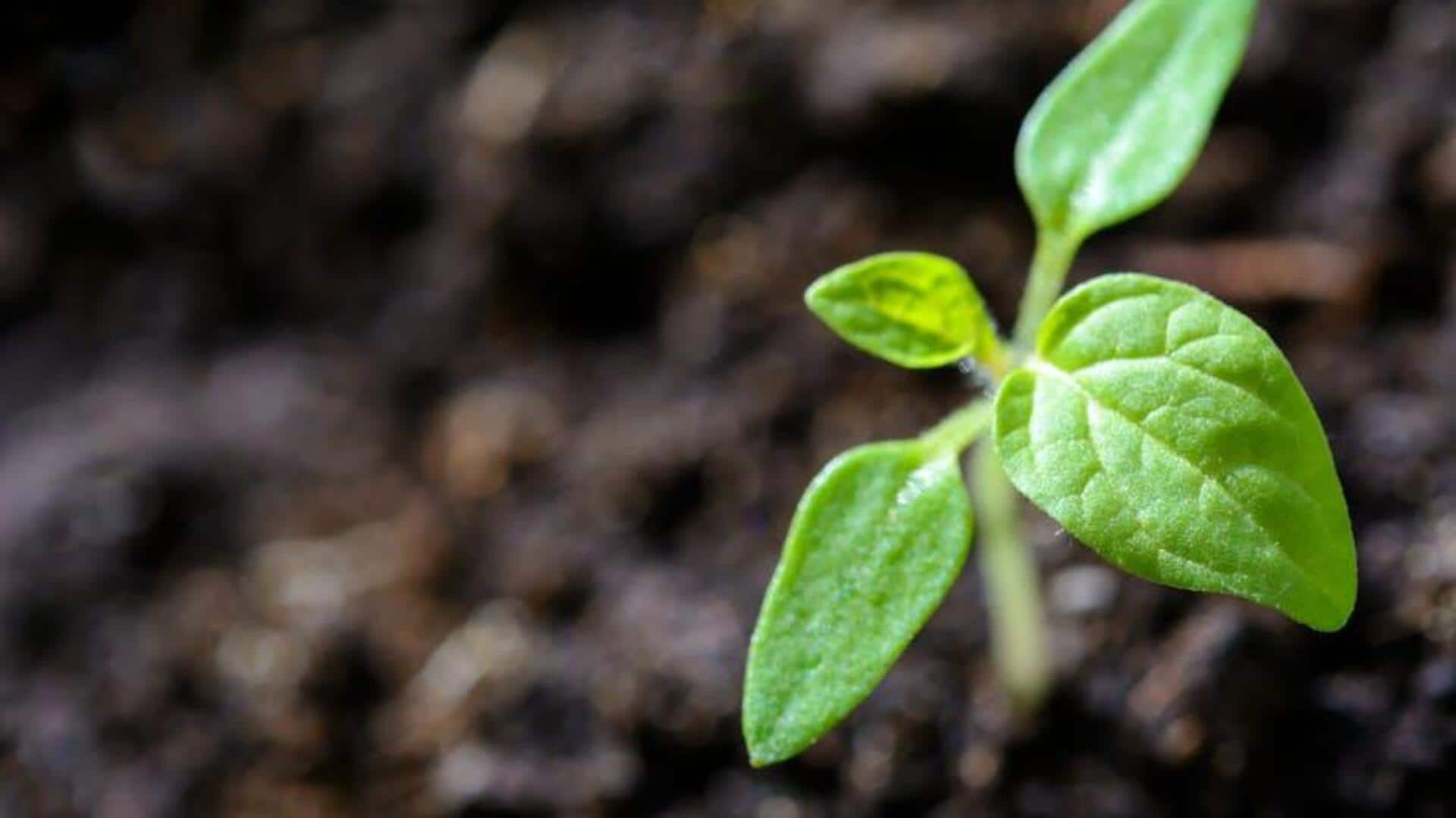Getting Started with Gardening
The initial step towards starting your garden involves a thoughtful evaluation of your available space, the local climate, and the specific crops you are
keen on cultivating. Commence by assessing your garden's sunlight exposure, since most vegetables require at least six hours of direct sunlight daily to prosper. Soil testing is crucial to determine its pH level and nutrient composition; this guides you in amending the soil with the necessary organic matter like compost or well-rotted manure. Choose crops native to your region, as they are naturally adapted to local conditions, reducing the need for intensive care and increasing your chances of a successful harvest. Plan your garden layout strategically, considering the spacing requirements of each plant to prevent overcrowding and ensure optimal growth. Finally, gather the right tools: a trowel, a hand fork, a watering can or hose, and a pair of gardening gloves are essential for the initial steps. These preparatory stages lay the foundation for a productive and enjoyable gardening experience.
Soil Preparation Essentials
Preparing the soil is a fundamental aspect of gardening, directly impacting the health and productivity of your plants. Begin by clearing the area of weeds, rocks, and debris, ensuring the soil is ready for cultivation. Soil testing is highly recommended; it allows you to identify any nutrient deficiencies or imbalances, guiding your amendment process. Incorporate organic matter such as compost, aged manure, or leaf mold into the soil. This enhances its structure, improves water retention, and adds vital nutrients. The method of tilling or digging depends on your garden's size and your physical capabilities. For smaller gardens, a hand fork or spade might suffice, while larger areas could benefit from a rototiller. Ensure the soil is well-drained, as waterlogged conditions can suffocate plant roots. Consider raised beds if your soil drains poorly or if you want to create a more visually appealing garden. Regular soil maintenance includes mulching, which suppresses weed growth, conserves moisture, and regulates soil temperature. These practices ensure your plants have the ideal environment to thrive.
Choosing the Right Crops
Selecting the appropriate crops is key to a successful gardening venture. The most critical factor is choosing crops suitable for your local climate and growing season. In India, the climate varies significantly across regions, so research which vegetables, fruits, and herbs thrive in your area. For instance, tomatoes, brinjal, and chilies flourish in warm climates, while leafy greens like spinach and mustard greens prefer cooler temperatures. Consider your personal preferences when choosing what to grow; selecting crops you enjoy eating ensures you will be more motivated to tend your garden. Research the specific needs of each plant, including sunlight requirements, water needs, and soil preferences. Start with easy-to-grow crops if you're a beginner, such as beans, radishes, and spinach, which can tolerate a range of conditions. Consider succession planting to extend your harvest season; this involves planting crops at intervals, ensuring a continuous supply of fresh produce. Finally, source your seeds or seedlings from reputable nurseries or local agricultural suppliers to guarantee quality and suitability for your region.
Planting and Sowing Techniques
Proper planting and sowing techniques are essential for ensuring healthy plant growth. For sowing seeds directly into the ground, prepare the soil by loosening it and creating shallow furrows according to the seed packet instructions. Sow the seeds at the recommended depth and spacing, and lightly cover them with soil. Water gently after sowing to ensure the seeds have adequate moisture for germination. When using seedlings, carefully transplant them into your garden, ensuring the root ball remains intact. Dig a hole slightly larger than the root ball and gently place the seedling inside, backfilling the soil and firming it around the roots. Water the seedlings thoroughly after transplanting. Consider using a seed starting method if you are using seeds. This gives your seedlings a head start and protects them from harsh weather conditions or pests. Maintain consistent moisture levels and ensure the plants receive adequate sunlight. Following these techniques maximizes your chances of successful plant establishment and growth, laying the groundwork for a bountiful harvest.
Watering and Irrigation
Effective watering is crucial for plant health and productivity. The frequency and method of watering should be adjusted to the specific needs of the crops and the prevailing weather conditions. The most important factor in determining when to water is to check the soil moisture; the soil should be moist, but not waterlogged. Water deeply and less frequently, encouraging the roots to grow deeper, thus making the plants more resilient to drought. The optimal time to water is in the early morning to allow the foliage to dry before nightfall, reducing the risk of fungal diseases. Several irrigation methods can be employed, including hand watering, sprinklers, and drip irrigation. Hand watering is suitable for smaller gardens, allowing you to target specific plants. Sprinklers are an option for larger areas but can lead to water waste and disease spread. Drip irrigation is an efficient method that delivers water directly to the roots, reducing water loss and promoting healthy plant growth. Observe your plants for signs of under- or overwatering, such as wilting leaves or yellowing. Adjust your watering practices accordingly to ensure optimal plant health and growth.
Weeding and Pest Control
Weeding and pest control are vital for a healthy garden. Weeds compete with your plants for nutrients, water, and sunlight, hindering their growth. Remove weeds regularly, either by hand-pulling, using a hoe, or employing organic mulches, which suppress weed growth. Inspect your plants frequently for pests and diseases. Early detection is crucial to prevent widespread infestation or infection. Identify the pests and diseases affecting your plants and choose the appropriate control methods. For pest control, consider using organic methods such as introducing beneficial insects, applying insecticidal soap, or using neem oil. Preventative measures, like companion planting (planting specific plants together to ward off pests) and crop rotation, can also reduce pest and disease problems. If diseases are present, remove affected leaves or plants promptly to prevent the spread. Ensure good air circulation in your garden by spacing plants properly and pruning as needed. Maintain overall garden hygiene by cleaning up plant debris and removing infected plant material. These practices help create a thriving garden environment, free from pests and diseases.
Harvesting and Maintenance
Knowing when and how to harvest your crops is essential to enjoy the fruits (and vegetables!) of your labor. Harvesting times vary depending on the type of crop. Research the specific harvesting guidelines for each plant you grow. For vegetables, harvest when they are at their peak maturity and flavor. For fruits, wait until they are ripe and have reached their optimal color and firmness. Use the correct tools for harvesting, such as a knife, pruning shears, or scissors, to avoid damaging the plants. Harvest regularly to encourage continued production; regular harvesting prevents the plants from putting their energy into seed production. After harvesting, maintain your garden by removing spent plants, adding compost, and preparing the soil for the next planting season. Practice crop rotation, changing the location of your plants each season to reduce the risk of soil-borne diseases and pests. Continue to monitor your plants for pests and diseases and take appropriate action as needed. Consistent maintenance ensures your garden remains productive and provides fresh, local produce throughout the growing season.









